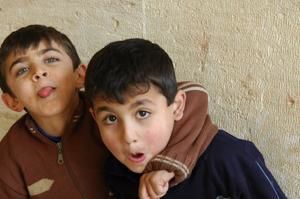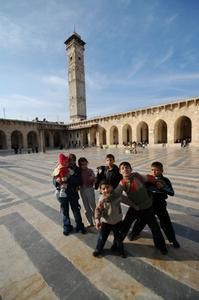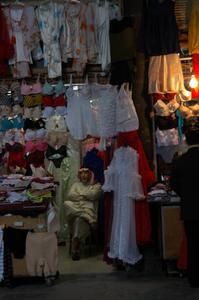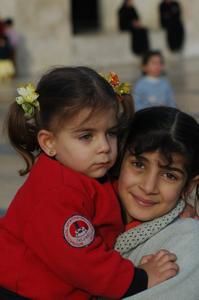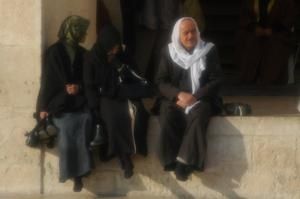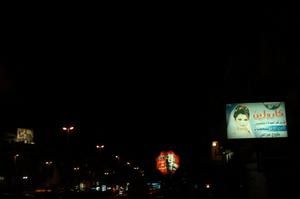"Breaking the Stereotype. Europe's Image of the Orient and the Orient's Self-Perception"
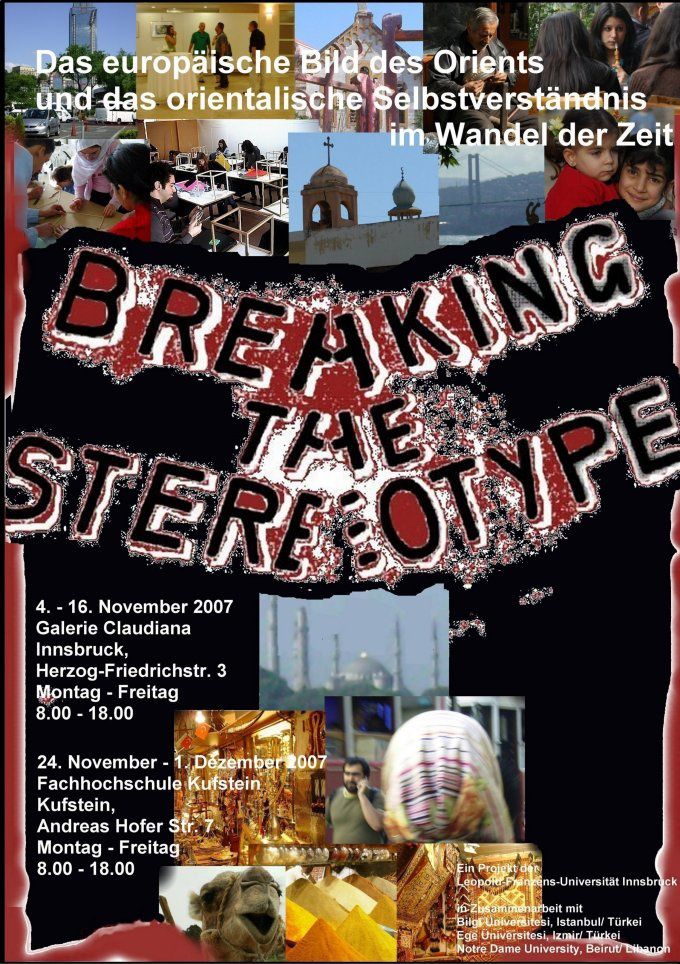
Team Exhibition Stage 1 (2007)
General responsibility: Cultures in Contact, Leopold-Franzens-University Innsbruck, Innrain 52, A-6020 Innsbruck, and cooperating universities, institutions and organizations: JoinIn/ Zemit, Innsbruck/ Austria; GenderLink, Salzburg/ Austria; Bilgi University, Istanbul/ Turkey(VCD-Department); Ege University, Izmir/ Turkey (English Language and Literature Department); Notre Dame University, Beirut/ Lebanon (VCD-Department).
Planning, coordination and final editing: Ass. Prof. Dr. Veronika Bernard, Cultures in Contact, Leopold-Franzens-University Innsbruck, Innrain 52, A-6020 Innsbruck.
Planning, coordinating and editing team (in alphabetical order): Ass. Prof. Dr. Veronika Bernard (Leopold-Franzens-University, Innsbruck/ Austria), Ass. Prof. Dr. İsmail Boyacı (University Passau/ BRD und Dokuz Eylül University, Izmir/ Turkey), Prof. Dr. İhsan Derman (Bilgi University, Istanbul/ Turkey), Arseli Dokumacı (Bilgi University, Istanbul/ Turkey), Dr. Gerhard Hetfleisch (Join In/ Zemit, Innsbruck/ Austria), Prof. Dr. Günseli İşçi (Ege University, Izmir/ Turkey), Ass. Prof. Dr. Eugene Sensenig-Dabbous (Notre Dame University, Beirut/ Lebanon).
Scientific team: theoretical background, research (in alphabetical order): Ass. Prof. Dr. Veronika Bernard (Leopold-Franzens-University, Innsbruck/ Austria), Ass. Prof. Dr. İsmail Boyacı (University Passau/ BRD und Dokuz Eylül University, Izmir/ Turkey), Dr. Dima Dabbous-Sensenig (Lebanese American University, Beirut/ Lebanon), Prof. Dr. Günseli İşçi (Ege University, Izmir/ Turkey), Erika Pircher (LibanLink/ Salzburg), Ass. Prof. Dr. Eugene Sensenig-Dabbous (Notre Dame University, Beirut/ Lebanon).
Creative team: exhibit and exhibition design (in alphabetical order): Ass. Prof. Dr. Veronika Bernard (Leopold-Franzens-University, Innsbruck/ Austria), Prof. Dr. İhsan Derman (Bilgi University, Istanbul/ Turkey), Ass. Prof. Dr. Eugene Sensenig-Dabbous (Notre Dame University, Beirut/ Lebanon).
Consultants (in alphabetical order):
Dr. Linda Choueiri (Notre Dame University, Beirut/ Lebanon), Dr. Dima Dabbous-Sensenig (Lebanese American University, Beirut/ Lebanon), Dr. Guita Hourani (Notre Dame University, Beirut/ Lebanon), Erika Pircher (GenderLink, Salzburg/ Austria).
Contributors (in alphabetical order):
Suror Abdul Ahad (Notre Dame University, Main Campus, Beirut/ Lebanon)
Nada Abdul-Baki (Notre Dame Universität, Shouf Campus, Beirut/ Lebanon)
Pascal Abboud (Notre Dame University, Main Campus, Beirut/ Lebanon)
Christelle Aramouny (Notre Dame University, Main Campus, Beirut/ Lebanon)
Alper Akçay (Bilgi University, Istanbul/ Turkey)
Hady Akiki (Notre Dame University, Main Campus, Beirut/ Lebanon)
Farah Al Andary (Notre Dame University, Main Campus, Beirut/ Lebanon)
Abdo Aoude (Notre Dame University, Main Campus, Beirut/ Lebanon)
Hisham Aoun (Notre Dame Universität, Shouf Campus, Beirut/ Lebanon)
Zeina Aoun (Notre Dame University, Main Campus, Beirut/ Lebanon)
Michele AridaI (Notre Dame University, North Campus, Beirut/ Lebanon)
Krystle Ashkar (Notre Dame University, Main Campus, Beirut/ Lebanon)
Hagop Ashkarian (Notre Dame University, Main Campus, Beirut/ Lebanon)
Lili Assouad (Notre Dame University, Main Campus, Beirut/ Lebanon)
Jean Azar (Notre Dame University, Main Campus, Beirut/ Lebanon)
Paula Azar (Notre Dame University, Main Campus, Beirut/ Lebanon)
Zeina Baaklini (Notre Dame University, Main Campus, Beirut/ Lebanon)
Uçman Balaban (Bilgi University, Istanbul/ Turkey)
Elias Bassil (Notre Dame University, Main Campus, Beirut/ Lebanon)
Nour Beainy (Notre Dame Universität, Shouf Campus, Beirut/ Lebanon)
Elie Bwary (Notre Dame University, Main Campus, Beirut/ Lebanon)
Haroutioun Bastajian (Notre Dame University, Main Campus, Beirut/ Lebanon)
Alain Bou Jaoude (Notre Dame University, Main Campus, Beirut/ Lebanon)
Daniella-Maria Boulos (Notre Dame University, Main Campus, Beirut/ Lebanon)
İsmail Boyacı (University Passau/ BRD, Dokuz Eylül University, Izmir/ Turkey)
Samer Bou Saleh (Notre Dame Universität, Shouf Campus, Beirut/ Lebanon)
Andreas Burtscher (Leopold-Franzens-University, Innsbruck/ Austria)
Pamela Carnaby (Notre Dame University, Main Campus, Beirut/ Lebanon)
Martin Challita (Notre Dame University, Main Campus, Beirut/ Lebanon)
Jim Dagher (Notre Dame University, Main Campus, Beirut/ Lebanon)
Rose Dahdah (Notre Dame University, Main Campus, Beirut/ Lebanon)
Antonio Della Rossa (Leopold-Franzens-University, Innsbruck/ Austria)
Miriam Der Mosessian (Notre Dame University, Main Campus, Beirut/ Lebanon)
Shnorhig Der Ohannessian (Notre Dame University, Main Campus, Beirut/ Lebanon)
Derin Derman (Bilgi University, Istanbul/ Turkey)
Caroline Diab (Notre Dame University, Main Campus, Beirut/ Lebanon)
Celine Doumit (Notre Dame University, Main Campus, Beirut/ Lebanon)
Richard Eid (Notre Dame University, Main Campus, Beirut/ Lebanon)
Christine Elias (Notre Dame University, Main Campus, Beirut/ Lebanon)
Stephanie Eid (Notre Dame University, Main Campus, Beirut/ Lebanon)
Rami El Ahmedieh (Notre Dame University, Main Campus, Beirut/ Lebanon)
Rana El Haddad (Notre Dame University, Main Campus, Beirut/ Lebanon)
Hiba Hassan (Notre Dame Universität, Shouf Campus, Beirut/ Lebanon)
Julie Haydar (Notre Dame Universität, Shouf Campus, Beirut/ Lebanon)
Adele El Helou (Notre Dame University, Main Campus, Beirut/ Lebanon)
Jessica Jamous (Notre Dame University, Main Campus, Beirut/ Lebanon)
George El Khabbaz (Notre Dame University, Main Campus, Beirut/ Lebanon)
Amanda El Kaddissi (Notre Dame University, Main Campus, Beirut/ Lebanon)
Oliver El Kik (Notre Dame University, Main Campus, Beirut/ Lebanon)
Michel El Rassi (Notre Dame University, Main Campus, Beirut/ Lebanon)
Nicole El Zoghbi (Notre Dame University, Main Campus, Beirut/ Lebanon)
Saygun Erkaraman (Bilgi University, Istanbul/ Turkey)
Serge Fahd (Notre Dame University, Main Campus, Beirut/ Lebanon)
Barbara Figl (Leopold-Franzens-University, Innsbruck/ Austria)
Randa Finianos (Notre Dame University, North Campus, Beirut/ Lebanon)
Sabine Gatt (Leopold-Franzens-University, Innsbruck/ Austria)
Engin Gerçek (Bilgi University, Istanbul/ Turkey)
Zeina Ghanem (Notre Dame Universität, Shouf Campus, Beirut/ Lebanon)
Firas Ghannam (Notre Dame Universität, Shouf Campus, Beirut/ Lebanon)
Veronika Gründhammer (Leopold-Franzens-University, Innsbruck/ Austria)
Suat Güler (IFOD/ Fotografenverband Izmir, Izmir/ Turkey)
Akın Gülseven (Bilgi University, Istanbul/ Turkey)
Youssef Habchi (Notre Dame University, Main Campus, Beirut/ Lebanon)
Rachel Hachem (Notre Dame University, Main Campus, Beirut/ Lebanon)
Christelle Hani (Notre Dame University, Main Campus, Beirut/ Lebanon)
Lina Hajj Obeid (Notre Dame University, Main Campus, Beirut/ Lebanon)
Georgine Hajjar (Notre Dame University, Main Campus, Beirut/ Lebanon)
Sabine Harb (Notre Dame University, Main Campus, Beirut/ Lebanon)
Stephanie Helou (Notre Dame University, Main Campus, Beirut/ Lebanon)
Kahraman Insan (Bilgi University, Istanbul/ Turkey)
Günseli İşçi (Ege University, Izmir/ Turkey)
Souad Jallad (Notre Dame University, Main Campus, Beirut/ Lebanon)
Salma Kaasamani (Notre Dame Universität, Shouf Campus, Beirut/ Lebanon)
Sinem Kayacan (Bilgi University, Istanbul/ Turkey)
Georges Khawam (Notre Dame University, Main Campus, Beirut/ Lebanon)
Karen Khalife (Notre Dame University, Main Campus, Beirut/ Lebanon)
Rudy Khoubieh (Notre Dame University, Main Campus, Beirut/ Lebanon)
Charbel Khoury (Notre Dame University, Main Campus, Beirut/ Lebanon)
Yağmur Kızılok (Bilgi University, Istanbul/ Turkey)
Ilke Alp Kızıltan (Bilgi University, Istanbul/ Turkey)
Orkun Kocabiyik (Ege University, Izmir/ Turkey)
Nassma Kordahji (Notre Dame University, Main Campus, Beirut/ Lebanon)
Firas Koukache (Notre Dame Universität, Shouf Campus, Beirut/ Lebanon)
Patrizia Krismer (Leopold-Franzens-University, Innsbruck/ Austria)
Zeina Mahmoud (Notre Dame Universität, Shouf Campus, Beirut/ Lebanon)
Hilga Melhem (Notre Dame University, Main Campus, Beirut/ Lebanon)
Tamara Melmer (Leopold-Franzens-University, Innsbruck/ Austria)
Sabine Moll (Leopold-Franzens-University, Innsbruck/ Austria)
Maria Katharina Moser (Leopold-Franzens-University, Innsbruck/ Austria)
Joanne Moussa (Notre Dame University, Main Campus, Beirut/ Lebanon)
Eliane Naaman (Notre Dame University, Main Campus, Beirut/ Lebanon)
Nadine Najem (Notre Dame University, Main Campus, Beirut/ Lebanon)
Daisy Najm (Notre Dame University, Main Campus, Beirut/ Lebanon)
Roger Neaimeh (Notre Dame University, Main Campus, Beirut/ Lebanon)
Joelle Nehme (Notre Dame University, Main Campus, Beirut/ Lebanon)
Jessy Nicolas (Notre Dame University, Main Campus, Beirut/ Lebanon)
Nour Obeid (Notre Dame University, Main Campus, Beirut/ Lebanon)
Christiane Oberhammer (Leopold-Franzens-University, Innsbruck/ Austria)
Ursula Barbara Oberleiter (Leopold-Franzens-University, Innsbruck/ Austria)
Elisabeth Pfattner (Leopold-Franzens-University, Innsbruck/ Austria)
Valentina Piffer (Leopold-Franzens-University, Innsbruck/ Austria)
Daniela Pirchmoser (Leopold-Franzens-University, Innsbruck/ Austria)
Sami Al Rashkidi (Notre Dame University, Main Campus, Beirut/ Lebanon)
Edward Rechdan (Notre Dame University, Main Campus, Beirut/ Lebanon)
Raffaela Rudigier (Leopold-Franzens-University, Innsbruck/ Austria)
Elie Sabbour (Notre Dame University, North Campus, Beirut/ Lebanon)
Rodolphe Saad (Notre Dame University, Main Campus, Beirut/ Lebanon)
Elias Saadeh (Notre Dame University, Main Campus, Beirut/ Lebanon)
Louis Saghbini (Notre Dame University, Main Campus, Beirut/ Lebanon)
Crystel Salame (Notre Dame University, Main Campus, Beirut/ Lebanon)
Charbel Salameh (Notre Dame University, Main Campus, Beirut/ Lebanon)
Gregor Sanders (Leopold-Franzens-University, Innsbruck/ Austria)
Nader Sarkis (Notre Dame University, Main Campus, Beirut/ Lebanon)
Melhem Sfeir (Notre Dame University, Main Campus, Beirut/ Lebanon)
Imad Tabbal (Notre Dame University, North Campus, Beirut/ Lebanon)
Ohanes Taslakian (Notre Dame University, Main Campus, Beirut/ Lebanon)
Houssam Tay Bou Dargham (Notre Dame Universität, Shouf Campus, Beirut/ Lebanon)
Tania Toubia (Notre Dame University, Main Campus, Beirut/ Lebanon)
Karen Toutounji (Notre Dame University, Main Campus, Beirut/ Lebanon)
Ersin Turan (Madress, Vienna/ Austria)
Marina Unterberger (Leopold-Franzens-University, Innsbruck/ Austria)
Tony Wakim (Notre Dame University, Main Campus, Beirut/ Lebanon)
Dina Wassef (Notre Dame University, Main Campus, Beirut/ Lebanon)
Mert Yamak (Bilgi University, Istanbul/ Turkey)
Denise Zech (Leopold-Franzens-University, Innsbruck/ Austria)
Amanda Zouein (Notre Dame University, Main Campus, Beirut/ Lebanon)
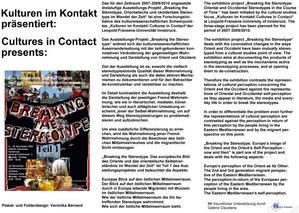 The project „Breaking the Stereotype"
deals with the connotative changes in the ways Orient and Occident have been mutually stereotyped. The exhibition aims at documenting the products of stereotyping as well as the mechanisms active
in the stereotyping processes, and at opening them to de-construction.
The project „Breaking the Stereotype"
deals with the connotative changes in the ways Orient and Occident have been mutually stereotyped. The exhibition aims at documenting the products of stereotyping as well as the mechanisms active
in the stereotyping processes, and at opening them to de-construction.
Therefore the exhibition contrasts the representations of cultural perception concerning the Orient and the Occident against the representations of Oriental and Occidental self-perception as they appear in literature, the media and every day life in order to break the stereotypes. In order to differentiate the problem even further the representations of cultural perception are contrasted against the perception-in return of this perception by the people concerned and against the migrant perspective.
As a consequence stage 1 of the exhibition project falls into the following categories:
Europe's view of the Orient
The Eastern Mediterranean migrants to Europe perspective of the Eastern Mediterranean
The perception-in-return of Europe's view of the Orient by Eastern Mediterraneans
The Orient's self-perception
Europe's view of the Orient
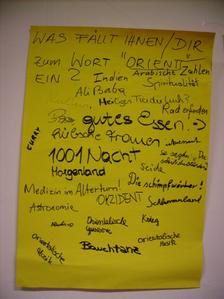
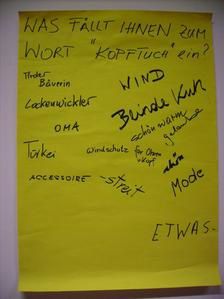
The Orient, the Muslim, the Headscarf, the Veil ...
In the academic year of 2006-2007 we used the „Young University" day for sort of an experiment.
On the first „Young University" day we asked people to spontaneously write down on a poster what they associate with the words „Orient" and „Muslim".
The results you have already seen on your way here.
Although our poll cannot be called representative its results only differ little from those of other polls, e.g. those collected by the Turkish Embassy in Vienna in their „Turkish-Austrian Dialogue" project.
On the second „Young University" day we then asked people to spontaneously write down on a poster what they associate with the words „headscarf" and „veil". At that time we had removed the Orient- and the Muslim-posters.
The various entries suggest that the word „headscarf" is only associated with Muslim and Orient if this link has been suggested before ...
... suggested by the terms „Muslim" and „Orient".
Obviously the image of the Muslim headscarf is part of a stereotype which is „activated" by hearing or reading those two other terms ...
How „activating" stereotypes works you will have a chance to learn immediately after entering the main part of our exhibition ...
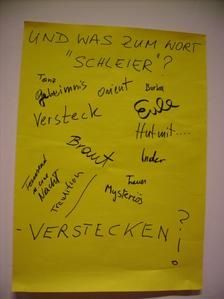

 Iran, Iraq, Syria, Turkey, Lebanon, Egypt, Jordan, Israel, the United
Arab Emirates, Palestine, Afghanistan
Iran, Iraq, Syria, Turkey, Lebanon, Egypt, Jordan, Israel, the United
Arab Emirates, Palestine, Afghanistan
This is a ranking of 12 countries which was done by students of Turkish at the university of Passau in the academic year of 2007-2008 when asked which countries they considered „oriental".
In a second step they were asked to list what they associated with those countries, what they associated with the term „oriental", and, finally, what they considered „oriental" with Iran, Irak, Syria and Turkey ...
And that's what was on their lists ...
Poll administration: Dr. İsmail Boyacı, University of Passau and Dokuz Eylül University, Izmir
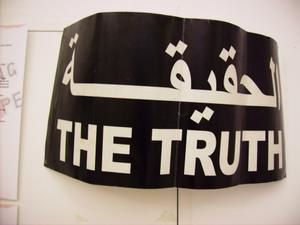 The Truth?
The Truth?
Can there be anything like a „truth" in the way in which we see ourselves and others and in the way in which we try to present ourselves to others?
Actually not.
In a way, the „truth" always lies in the eye of the beholder ...
People have their very personal image of themselves, and this image may differ strongly from the image others have formed of that very person.
There may be several causes and reasons for this.
The image others form of us may be influenced by the situation in which we meet someone, it may be influenced by the ideological and social background of those we meet and also by their personal situation; and last but not least, it may be influenced by what the other knows about us - or thinks to know about us: about our ideological and social background, and about our situation in life...
Our exhibition deals with a special type of such images which we form of others - and with the way they are formed: Stereotypes.
There is no „true" image of others for us, just a „manifold" one.
That's why we define „stereotype" as something not opposing reality. When we use the term we mean those products of intellectual modelling which are based on generalizing and simplifying what we perceive.
In case people shape their images of others on the grounds of such generalizations and simplifications they have „stereotypical" images of others...
„Stereotype" can also be defined in the following way:
Stereotype,
simplifying, generalizing and stereotypical judgement
unjustified judgement on you and others as well as things
irreversible image, cliché
What do you mean by stereotype?
„Breaking the Stereotype" - how to do this: breaking stereotypes?
„Breaking the Stereotype" - that's the title of our exhibition.
However, what is meant by „breaking" stereotypes - and how should it be done?
In our exhibition we are trying to make people aware of stereotypes and by this promoting a critical attitude towards stereotypical thinking. This is what we mean by „breaking" stereotypes.
Certainly, this is a hard job. This is due to the nature of stereotypes.
Stereotypes are based on certain stable patterns which keep reappearing. Habits, ways of acting, features - mostly they are quite unspectacular habits, ways of acting and features - are combined in clusters. Those clusters of so-called characteristics guarantee that we „recognise" and „remember". Features like clothes and age, but as said before, also certain habits can „re-call" stereotypes in our minds.
Individuals „learn" stereotypes in the course of education: by their parents, their families in general, public opinion and/ or the media. Yet, there need not be personal experience involved in this.
And that's the main point: Personal experience is no factor in this process.
Stereotypes are formed even if the individual has never come into contact with the groups she or he stereotypes.
Such a group can be everything from young people belonging to our own society to other cultures.
Apart from this stereotypes are highly emotionalized (positively and negatively). And everything which is not built on logic but on emotion can be argued against only with great difficulty ...
In addition, stereotypes fulfil a certain function within a group/ a society: They are used to promote, stabilize and secure those values which the group/ society uses to define themselves.
Whoever tries to „break" stereotypes, therefore, has to take an effort in motivating people to discuss their values (and those of their group/ society) at the same time ...
The stereotypical term „Orient"
Actually, the term „Orient" is the first stereotype you meet in our exhibition.
We use it quite naturally and without much thinking about it. Nevertheless, it just seems to be a precise term. Well, certainly, a term - but a term referring to what, actually ...?
Do we really know where exactly the Orient starts and where it ends? And which countries are „oriental" ones? Do we know what exactly we link with the term - and why we do this?
Do you remember the posters you saw on your way up the stairs when you came here? On those posters you already met the variety of what Europeans of different origin, age and educational background spontaneously associate with the term: which countries and with features of people living there.
And most of those features are stereotypes ...
In former times the Orient included all of Asia; all Arab countries, Iran, India and China, later on, it was limited to the Middle East including Egypt and most of the Islam cultures.
In current European usage the „Orient" refers to all Middle Eastern and arab-muslim countries including Turkey, Iran, Pakistan and Northern Africa, but without the muslim states of South East Asia.
Lately, however, the „Orient" is rather associated with religious and cultural issues than with geographical and political aspects.
Starting off with the exhibit „Said: Orientalism" our exhibition also shows that the perception of the Orient has always been part of a more general perception of the Other and due to this has also been strongly shaped by fears, unconscious projections and prejudice.
Edward W. Said in particular has analyzed this aspect of the European perception of the Orient and named it „Orientalism" - provided it has been made the grounds on which power has been executed on the Orient.
Research: Barbara Figl, Veronika Gründhammer, Marina Unterberger,
Universität Innsbruck
Occidentalist and Orientalist Stereotypes in the Course of Time
Those are the very stereotypes of the type defined which we would like to help „break" with our exhibition project.
The exhibition you are just walking through is part 1 of our project.
It deals with European images depicting the Orient. In which way has European perception and depiction of the Orient changed? Which perspective have Europeans adopted nowadays? What was the situation like 200 years ago and earlier?
In order to replace those stereotypes by a manifold view on the issue those positions are contrasted against images of Oriental sef-perception.
And last but not least the exhibition deals with the way in which the people in the East perceive the images Europeans have formed of them.
As even this aspect is subject to stereotyping ...
Part 2 of our project centres upon the way in which Easteners have perceived and depicted Europe, and it contrasts those images to the ones of European self-perception.
Part 2 of our exhibition will be open for visitors at Istanbul in October 2008.
Part 3 of our project will try to link the two perspectives in order to promote a mutual understanding of the changing stereotypical images of the Orient and Europe.
All this is done because we are convinced that only the one who learns to understand stereotypes will also be able to understand the cultures which create them ...
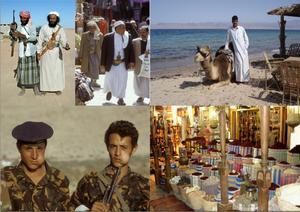 What do you see?
What do you see?
From earliest age onwards we begin forming our understanding of the world. We listen to stories from One Thousand and One Nights, we hear about mysterious storytellers, about beautiful
exotic princesses, about camels and the like. Categories and stereotypes we form help understand feelings and thoughts about the outside world. At the same time we start separating according to
these categories. We juxtapose the Orient and the Occident, man and woman, the one explaining the other. What is not recognised as western is projected on the East. Our understanding forms, changes and matures over time. The limited images of the
"other" that we internalise through fairy tales are expanded in the course of our socialisation. What we experience, read or hear broadens our picture. New categories are added.
Our understanding forms, changes and matures over time. The limited images of the
"other" that we internalise through fairy tales are expanded in the course of our socialisation. What we experience, read or hear broadens our picture. New categories are added.
Crucial and frightening experiences trigger new categories of menace and fear. Again, we understand and separate, categorising on the basis of good and evil. We transfer our images of evil to a
reality of multiple and hybrid nature which is blurred because of our need to simplify its complexity. We do not see the people behind our categories, but just the meaning, the image of fear we
have constructed.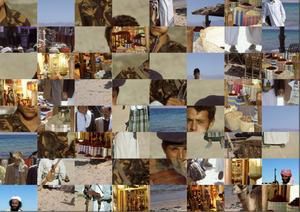 What is behind these images? The self. Stereotypes are a way of expressing
our fears and dreams. Considering the image of the terrorist we become aware that it is based on our own fears. Looking at the image of the beautiful oriental woman we see some of our own dreams
and wishes. In a way, the "other" becomes a mirror to our self.
What is behind these images? The self. Stereotypes are a way of expressing
our fears and dreams. Considering the image of the terrorist we become aware that it is based on our own fears. Looking at the image of the beautiful oriental woman we see some of our own dreams
and wishes. In a way, the "other" becomes a mirror to our self.
Exhibit "What do you see?": Sabine Gatt, Elisabeth Pfattner, Valentina Piffer, University of Innsbruck

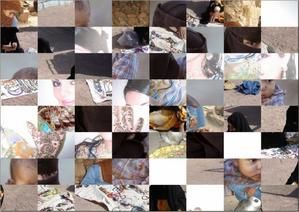
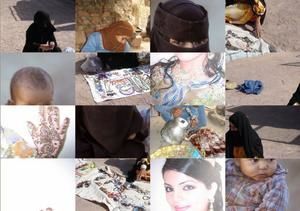

 What means the Kufiya to you?
What means the Kufiya to you?
Nowadays men in the Near East wear the about 1 square metre big cloth for protection against the sunlight.
With Arafat, however, even the way he draped the Kufiya had a special meaning. The triangle shape was meant to symbolize Palestine's historical shape.
In Europe the Kufiya symbolizes something different.
Indeed, you ought to differentiate between the black and white one used by the left wings (who long for more democracy) and the red and white one used by the anarchists (who do not want a state at all). The Kufiya is worn as a face cover during demonstrations.
Since the late 1990s the Kufiya is also used by the far right, the fascists. This is done in an attempt to copy leftist symbols and in order to express antisemitically motivated support with the Palestinean issue.
How did the Kufiya reach Europe, however?
Many researchers dealing with the 68-movement think that members of the Socialist German Students Society took the Kufiya to Germany after staying with the PLO in Palestine.
And what about its history?
The Arab term has been coined after the Iraqi city of Kufa where the Kufiya is part of the traditional male dress. Later it spread among the male rural population of the region - among both Arabs and Bedouines.
During the Arab uprising of 1930 the Palestinean-Arab nationalists, who were led by the Mufti Amin al-Husseini, tried to make the Kufiya popular also with the urban population - as a symbol of self-determination and against colonialism and the landtaking by Jewish settlers.
Antonio Della Rossa, Ursula Barbara Oberleiter, Raffaela Rudigier, Gregor Sanders, Denise Zech, University of Innsbruck
Sources:
http://www.faz.net/s/Rub117C535CDF414415BB243B181B8B60AE/Doc~E1321C032D3484F40B90A57E6757FD9D5~ATpl~Ecommon~Scontent.html; http://de.wikipedia.org/wiki/Kufiya; http://www.focus.de/politik/deutschland/rechtsextremismus_nid_42148.html
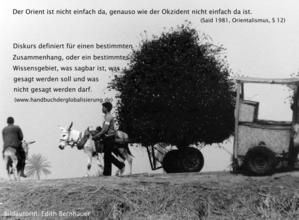 Orientalism
Orientalism
Edward W. Said's book „Orientalism" was published in 1978.
Said, who has established his rank within the U.S. intelligencia, originally is Palestinean.
The central idea of his book is that neither the Orient nor the Occident exist per se (i.e. originally) but are products of discourse (i.e. products of intellectual modelling).
The West has „made" the Orient and the Oriental by attributing certain qualities to the region and the people living there.
The knowlegde the west has produced on the Orient in and by discourse, Said states, is abused to controll the region.
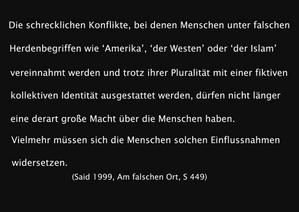 „We" and the „Others" - the others lack knowlegde and know-how, they are
Barbarians, who need guidance and controll (by the West).
„We" and the „Others" - the others lack knowlegde and know-how, they are
Barbarians, who need guidance and controll (by the West).

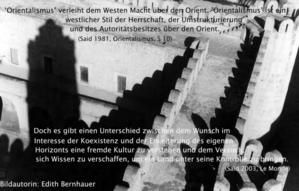

 The west promotes its status and its identity by epreciating the Orient.
The west promotes its status and its identity by epreciating the Orient.
Particularly in times of imperialism and colonialism this strategy was used to legitimize the suppression of oriental peoples.
Exhibit „Said: Orientalism": Barbara Figl, Veronika Gründhammer,
Marina Unterberger, Universität Innsbruck
How does 20th and 21st century Europe perceive the Orient?
For most of the last 30 years there has not been one, single image of the Orient but there have been several images.
One aspect all those images have in common, however: They are based on stereotypes, even though on very different ones.
The News Media provide us with pictures of yelling, raging „oriental" masses eager to use violence, with the scetch of a wanted terrorist or of a terrorist who was killed in committing his deed, or they provide us with a suicide bomber shown on a video he produced before going to action.
Advertisments provide us with the image of a hospitable, a sensual, a vividly coloured, a voluptuously and fragantly smelling, as well as a tempting Orient.
Fiction provides us with all those images. Which are chosen depends on the writer's, the reader's and the publishers' position and issues.
Texts to be published are selected according to those positions and issues, and bookcovers are designed according to them ...
And finally, when we go on holiday to Turkey or Egypt we are provided with what the people there think we might regard and estimate as the „typical" - and we grateful take this home as the „typical Oriental" motives on our photos ...
All those images - the negative and the positive ones - ex ist side-by-side, just like the exhibits in our exhibition present them and comment on them for you.
But have you ever wondered how it can be possible that such contraditory images can exist side-by-side within a socitey, and all are considered to be „true" and valid?
In case you feel motivated to think about this point after having gone through our exhibition we will have reached at least part of our aims ...
Research: Barbara Figl, Veronika Gründhammer, Marina Unterberger, University of Innsbruck
 The Males: sabres, daggers, rifles, beard, turban, caftan, dark skin
The Males: sabres, daggers, rifles, beard, turban, caftan, dark skin
The Females: Silhouettes, dark long covers, eyes, victims
...those are the attributes which in particular the news media provide us with when reporting on the Middle East, Turkey and Afghanistan.
And those Media are also the ones who comprise those very attributes into pictures once more when reporting on migrants from those places who have decided to move to Europe.
In May 2006 the Austrian News magazine „Profil" commented on a migration study done by the Austrian Ministry of the Interior by putting a Deix-cartoon on its cover
which made use of all those attributes in showing a fiercly  looking Oriental male and a
veiled female with a severely bruised face ...
looking Oriental male and a
veiled female with a severely bruised face ...
And another issue of the same maganzine commented on the situation in Afghanistan by showing a man with a dagger in his mouth ...
Call this sarcasm or call it promotion?
How the people affected by this way of European stereotyping feel about it you have a chance to learn at a later point in our exhibition.
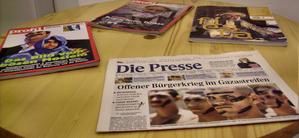
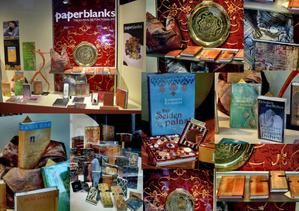 And that's the Orient in the colourful world of advertising ...
And that's the Orient in the colourful world of advertising ...
...camels, mosques, turbans in soft but vivid colours. Maybe some palm trees in the background and a few bags with spices or a bazar.
No matter, whether a film, an exhibition or a touristic destination is advertised, the image of an erotic and eroticizing Orient is evoked - almost reminding us of the ghost in the bottle whom we met in „1001 Nights".
Well, what eroticizes sells.
And also those stereotypes have reached the people affected by them ...
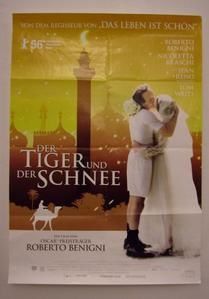
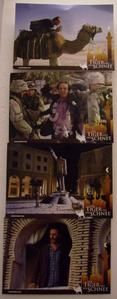
 Pomegranate, dark female eyes, red veils, mosques, wire, creatures in long black covers
...
Pomegranate, dark female eyes, red veils, mosques, wire, creatures in long black covers
...
... depending on their issues European publishing houses choose from the range of „oriental" sujets to design their bookcovers.
Mostly they choose the sujets we know from advertising in general.
However, those sujets are chosen even for books which just marginally deal with the „Orient".
The German paperback editions of the novels written by last year's nobel laureate for literature, Orhan Pamuk, are vivid examples of this, along with some German bookclub editions of his books and of books by other Turkish writers.
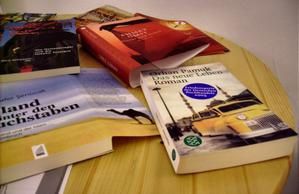
The covers of the Turkish originals of Pamuk's books you
can have a look at towards the end of our exhibtion. So you have a chance to get an idea of what's different ...
Covers with books such as Alice Schwarzer's „Die Gotteskrieger und die falsche Toleranz" instead make use of those frightening and threatening images we know from the Media: wire and creatures in black cover ...
Those are the books which mean to tell the truth.
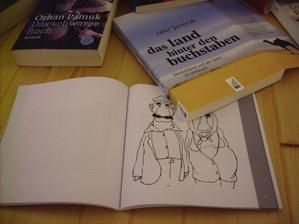 How stereotypical the vocabulary of those often is who mean to tell the truth is shown
in the book „Wörterbuch der AusländerInnenologie".
How stereotypical the vocabulary of those often is who mean to tell the truth is shown
in the book „Wörterbuch der AusländerInnenologie".
Just skim through it a bit ...
 Everyday Stereotypes of Origin
Everyday Stereotypes of Origin
You most certainly are familiar with the question: „Which country does this originally come from?" - and you most certainly are familiar with what comes afterwards: various ideas spontaneously coming to your mind; thinking hard to find out; maybe using some encyclopedia to do some research ...
And mostly we are very much surprised when we find out.
We have got a certain stereotype in our minds; something we think to have heard of for all our lives, and finally things are totally different ...
I have selected three of those tricky everyday stereotypes of origin for you, and I would like to invite you to find out whether you really know where they come from: the tulip, the croissant, and the apple-strudel.
The only thing I ask you to do is; think briefly, please, and lift the white piece of paper covering the text on the exhibit and have a look ... Thanks a lot.
The information I am using in my exhibit I took from Kerstin Tomenendal's book Das türkische Gesicht Wiens. Auf den Spuren der Türken in Wien (Wien: Böhlau, 2000).
Exhibit „Everyday Stereotypes of Origin": Tamara Melmer, University of Innsbruck
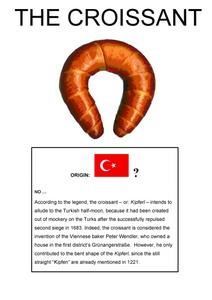

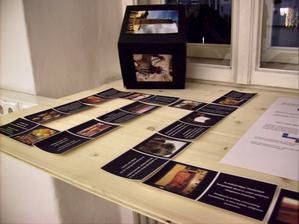 „Stereotypes-Photo-Cube" and „Stereotypes-Dominoes"
„Stereotypes-Photo-Cube" and „Stereotypes-Dominoes"
Dear visitors,
we have designed two interactive exhibits for you: the „Stereotypes-Photo-Cube" and the „Stereotypes-Dominoes". Both are meant to draw your attention to some wide spread orientalist prejudices and clichés, and to make you think about them. We would like to invite you to engage in the playful and interactive nature of our exhibit. Thanks a lot for your cooperation.
On the cube you see stereotypical pictures which are self-evident and do not need to be commented on.
The same is true of the dominoes. With our slightly different version of the well known game the focus is on combining texts and pictures. Again you will find stereotypical ideas of the Orient
which are quite common 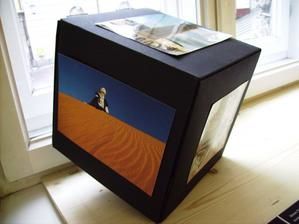 in Europe. At the same time you will get a chance to
check on stereotypical knowledge on Oriental countries (also see the instructions titled „How to play Stereotypes-Dominoes"). It is no coincidence that most of the photos we have chosen have been
taken by tourists and because of this show common clichés.
in Europe. At the same time you will get a chance to
check on stereotypical knowledge on Oriental countries (also see the instructions titled „How to play Stereotypes-Dominoes"). It is no coincidence that most of the photos we have chosen have been
taken by tourists and because of this show common clichés.
After making use of our two exhibits we would like to invite you to re-evaluate your personal, and maybe stereotypical, images of the Orient. Maybe, you have recognized one or the other of your stereotypical images in our exhibits, and can now give it a try to remove them from your mind - and, maybe, also from other people's minds.
Exhibits „Stereotypes-Photo-Cube" and „Stereotypes-Dominoes": Sabine Moll, Katharina Maria Moser, Daniela Pirchmoser, University of Innsbruck
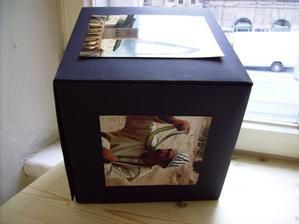
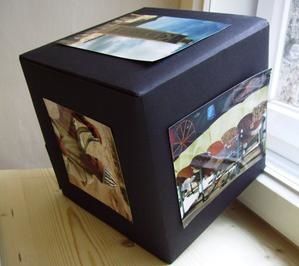
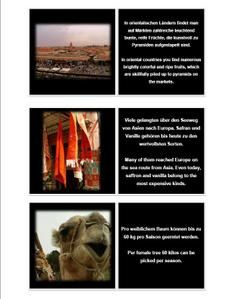
 How to play „Stereotypes-Dominoes"
How to play „Stereotypes-Dominoes"
The game has been successfully played when you have put the dominoes into their correct order. You should link each picture to a text corresponding to the picture. Please, start with a domino of your choice and put it on the table in front of you. Look for a domino with a suitable text and put it next to the one you have already put on the table (see below). The dominoes may change direction.
In case you have combined the right pictures and texts you will finally reach the very stone you have started with.
Enjoy the game.
Exhibit „Stereotypes-Dominoes": Sabine Moll, Katharina Maria Moser, Daniela Pirchmoser, University of Innsbruck
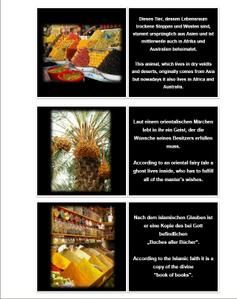
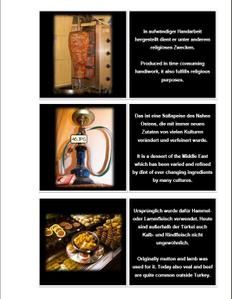
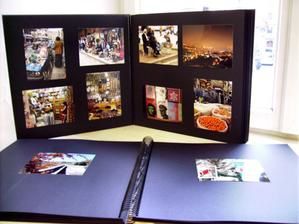 Photo-Album
Photo-Album
„Austrian-Arab Relations - Lebanon and Syria"
The photos we have collected for you in our photo-album were also taken on our excursion to Lebanon and Syria titled „Austrian-arab Relations - Lebanon and Syria". We were a group of about 32 students of Political Science guided by Prof. Dr. Jörg Becker (Dep. of Political Science, University of Innsbruck).
What you see on our photos is the western view on the oriental world of Lebanon and Syria.
Some of the photos were taken in Paris at the Centre Arabe du Monde.
The language of the pictures can neither be „translated" into nor „replaced" by any spoken language.
Exhibit „Photo-Album: Austrian-Arab Relations - Lebanon and Syria": Antonio Della Rossa, Ursula Barbara Oberleiter, Raffaela Rudigier, Gregor Sanders, Denise Zech, University of Innsbruck
The Theme Video 2007 "Breaking the Stereotype"
To watch the video click on this link: http://breaking-the-stereotype2007.blogspot.com/2008/12/theme-video-2007.html
Antonio Della Rossa, Ursula Barbara Oberleiter, Raffaela Rudigier, Gregor Sanders, Denise Zech, University of Innsbruck
The Orient in Literature and the Arts
All the 20th and 21st century stereotypes you have met in our exhibition are no inventions of our times.
Both, the negative and the positive ones, have been in existence before. They go back as far as the times of the crusades when just like in the Media nowadays the European image of the Muslim Orient was a threatening and frightening one.
The difference, however, is that in former times all those stereotypes did not exist side-by-side in the way they do nowaydays. Instead, at certain times certain stereotypes dominated the others: either the positive the negative ones or the other way round.
Still, how did those stereotypes spread in European society?
Here are some of the main ways.
The Arts
In the period between the 17th and the end of the 19th century the Orient and the Orientals were not exclusively seen as the negative European counterpart anymore.
In the arts you find orientalizing tendencies around 1750. The paintings by Delacroix for example idealize the Orient in a romanticizing manner and style.
19th century travel writings
19th century Austrian travellers, for instance, mention the vivid oriental colours. Vivid colours are associated with creativity, cultural variety and tolerance and are seen positively and in contrast to Europe. Europe symbolizes a counterworld of a grey everyday life and daily routine. Islamic culture is seen as an alternative to this kind of European life. Until the mid 19th century the idea of an oriental originality and authenticity which had come into being during the 18th century was strongly promoted. Oriental travellers describe the Oriental as a being living closely linked to nature, as natural and original. During the second half of the 19th century, however, this aspect was increasingly stated as an indication of oriental backward-ness.
Arabian Nights
The probably best known oriental collection of stories in Europe came into being between the 10th and 16th century.
As soon as the 14th century first parts of the collection reached Italy, but it was not until the beginning of the 18th century that a French re-writing of the complete collection was published in 12 parts.
It is this edition or the first German one of the year 1824 which most Europeans owe their image of the Orient to ...
Research: Barbara Figl, Veronika Gründhammer, Marina Unterberger,
University of Innsbruck

Orientalist Travellers
Journeys to Oriental places became sort of a fashion during the 19th century.
In 19th century travel writings liveliness of colours is presented as one of the dominating Oriental features. It is seen as the leading difference between the Orient and the Occident.
Liveliness in colours symbolizes Oriental sensuality.
Descriptions of the Harem confront readers and spectators with another aspect of sensuality attributed to the Orient; the possibility of having more than one legal wife at a time.
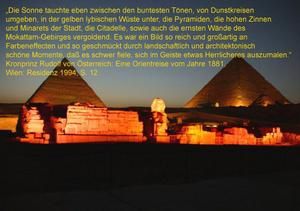
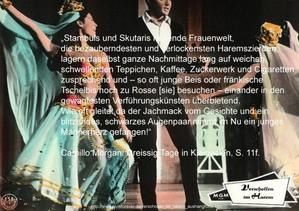
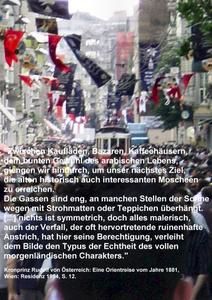
The stereotypical image of the Harem shows a group of women who are either presenting themselves in a lascivious manner on the floor or who are dancing temptatively and seducively. This
sterotypical image was formed to a great extent by 19th century European painters and writers who had never been allowed to a Harem.
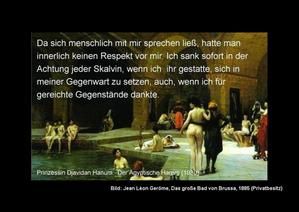 Many travellers reproduce those stereotypes in their travel writings, as can be seen
with Rudolf of Habsburg, the Austrian successor to the throne to be, and with Camillo Morgan, another subject to the Habsburg Monarchy travelling the Orient. Both men travelled to the Ottoman
Empire during the second half of the 19th century; Rudolf of Habsburg to Egypt and Palestine, Camillo Morgan to Asia Minor.
Many travellers reproduce those stereotypes in their travel writings, as can be seen
with Rudolf of Habsburg, the Austrian successor to the throne to be, and with Camillo Morgan, another subject to the Habsburg Monarchy travelling the Orient. Both men travelled to the Ottoman
Empire during the second half of the 19th century; Rudolf of Habsburg to Egypt and Palestine, Camillo Morgan to Asia Minor.
Exhibit „Orientalist Travellers": Andreas Burtscher, University of Innsbruck
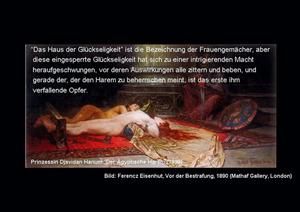

The European Enlightenment and the Orient
If we turn back in history we will come across a cultural movement in 18th century Europe which we are used to call „Enlightenment" nowadays.
Open-mindedness became one of the central issues of this movement. In Europe the members of the Jewish communities for the first time got a chance to emancipate at least a bit within society.
The European intelligencia developed a strong interest in non-European cultures. The idea of the „Noble Savage" came into being due to the enlightened principles of dealing with other cultures, and indeed, this was a quite progressive concept then.
Particular attention was given to the Orient. During the late 18th century people followed some „a la Turka" fashion in Northern Germany.
If you would like to get an idea of this new and positive view of the oriental culture it will be best to read G. E. Lessing's „Nathan, the Wise" and Goethe's „West-Eastern Divan". The ideas you find there represent a major change in perspective compared to those times when due to the religious orientation of European society the Orient and Islam had been primarily seen as a threat for Christianity.
During the Middle Ages the fact that Christianity had claimed to be the only „true" religion on earth led to an intense despise of all those who believed differently, in particular Jews and Muslims. Due to this the Oriental was depicted as being cruel and detestable. To kill him was not seen as a sin but as a deed honouring God.
The Ottoman Wars, in which the Muslim Ottomans conquered large parts of Christian Europe and in whose course Vienna was besieged for two times in 1529 and in 1683, helped to stabilize this perception of the Orient. In those times in particular those images of the Oriental were promoted which depicted him as being voluptuous and sexually aggressive. They had first come into being during the crusades and referred to the oriental tradition of the Harem.
„Nathan, the Wise", published in 1779, finally, was one of the reasons why Islam found its way into the 18th century enlightened debates on emancipation and cultural open-mindedness. Lessing's „Nathan" asks for cultural respect to be paid by a Christian Europe to the oriental world on the grounds of those enlightened ideas. Goethe discusses oriental culture in a quite similar way in his „West-Eastern Divan" which was first published in 1819 and to which chapters were added in 1827.
In a way, one stereotypical image of the Orient was so replaced by another one.
Research: Barbara Figl, Veronika Gründhammer, Patrizia Krismer,
Marina Unterberger, University of Innsbruck
 Nathan and the Game of Chess
Nathan and the Game of Chess
We do not know for sure in which oriental country the game of chess came into being sometime between 500 and 100 B.C. In Lessing's „Nathan, the Wise" chess is of vital importance.
Due to this, my exhibit links the characters to be found in „Nathan" to the characters of the game of chess, all based on quotations taken from Lessing's text and being suitable to illustrate the characters' features.
The King: Sultan Saladin
the emperor of Jerusalem; open-minded.
The Queen: Sittah
the Sultan's sister; makes use of her power; gives direction to the plot.
The Castle: Nathan
the leading character; a wealthy Jew; open-minded and wise; steady and persistent; he is in the centre of the plot.
The Knights: Recha and the Templar
innocent and sincere; are pushed around by others.
The Bishops: Daja and the Monk
Daja tries to force her will on others, she manipulates and directs others.
The Monk influences the plot by what he tells others.
As Christians both are shown to be scheming and plotting.
Exhibit „Nathan and the Game of Chess": Patrizia Krismer, University of Innsbruck
Stereotypes are no one-way streets ...
... as they strike those who are affected by them - and cause them to react in more than one way only.
Reaction no. 1: A second stereotypical image is formed.
Those affected by the stereotypes form their images of how the other sees them based on how they have perceived the original stereotypes.
This very image which is formed that way determines all further communication with those ones who have formed the original stereotypes ...
This is reaction no. 2, which stereotyping can cause.
Communication can be cut completely - if resignation and the feeling of being misunderstood lead to that well-known „If people see me like this there is nothing else to be said"-reaction.
A welcome stereotype can be adopted - as can be seen quite commonly in advertising aiming at the tourist target group.
And last but not least, the people affected by negative stereotypes may try to adapt the way they present themselves to others according to what they think the others expect of them in order to replace their original stereotype by some other more positive image.
Following the logic of stereotyping, however, this adaptation is based on another stereotype: It is the stereotypical image of the other's self which the one who has originally been stereotyped has formed ...
This image, however, will be subject to part 2 of our exhibition which will be shown in Istanbul next year.
For our current exhibition we asked our team members in Turkey and the Lebanon to design exhibits based on their perception of how Europeans stereotype their cultures.
Please, have a look at what they have come up with ...
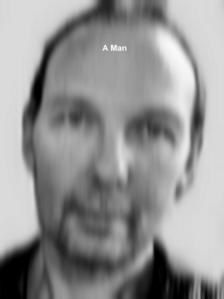 The Turk in Othello
The Turk in Othello
While I was conducting a research in the U.S. American students at my university were asked which characteristics they attributed to a Turk. Whatever they listed was negative ...
Most probably the only Turks they had ever seen in their lives were their professor and me.
They could not have taken their professor as a model of the characteristics they had listed as she was the most cultivated person I have ever met.
So, which were the sources of their prejudices?
They had hardly met any Turks; but they had been confronted with canonical works like the Shakespearean plays, for instance Othello and The Merchant of Venice.
This gave me the idea that, at least to a significant extent, those stereotypes have been transmitted by those works.
When I had returned to Turkey I published the article "English Literature and Cultural Studies: Contextualizing Othello" on which the exhibit The Turk in Othello is based ...
Prof. Dr. Günseli Sönmez İşçi (Ege University, Izmir/ Turkey)
Exhibit-Design-Idea: Privatdoz. (Ass. Prof.) Dr. Veronika Bernard,
University of Innsbruck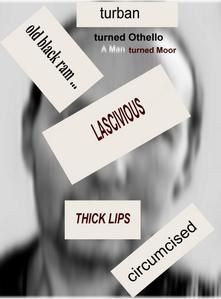


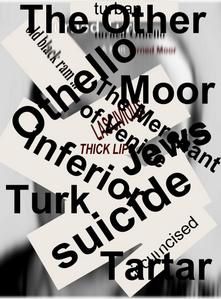
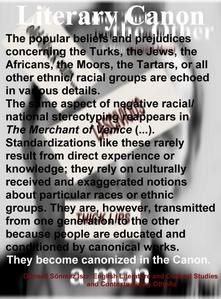
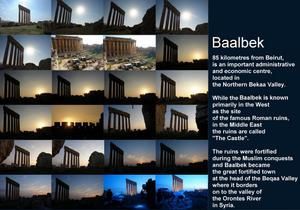
The Lebanese reception of a European View of the East
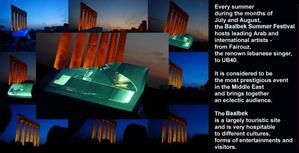

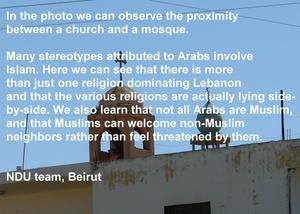

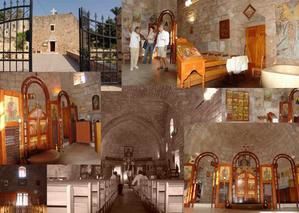



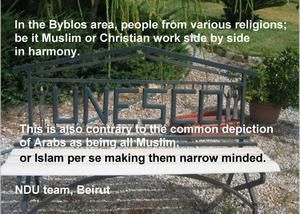
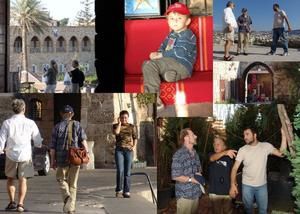

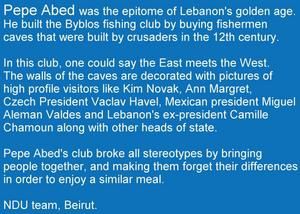
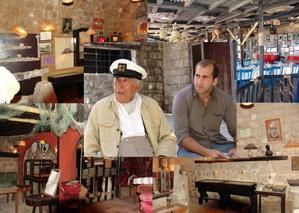

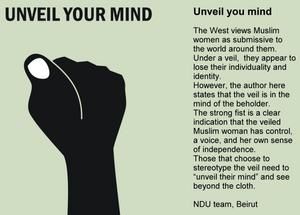
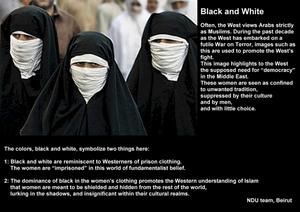
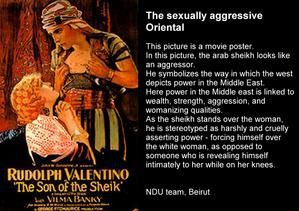
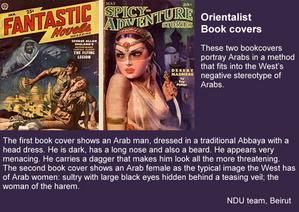
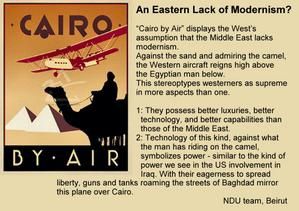

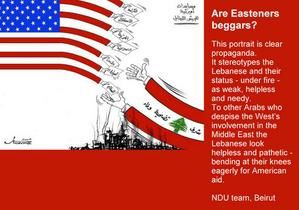
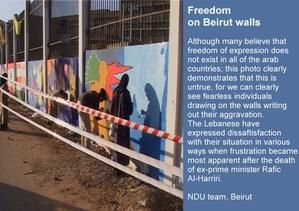
How migrants see what has been their home once ...
It is so tempting:
There are migrants, and actually they should know how life in their home countries is like ...
However, migrants who or whose parents come from the eastern Mediterranean form their images from a distance and based on their individual perception of their home countries. So, they do not give a 1 to 1 image of some reality either ...
What their perception focuses on when creating their images strongly depends on the situation in which they do so.
Did they flee from the country? Were they looking for more favourable living conditions? Did they find what they were hoping for? Did they meet cultural understanding in the places they moved to? Did they meet cultural discrimination? How did their parents talk about their former home?
All this can lead to stereotypical images, too.
And quite often they strongly resemble those which already exist in the new environments ...
An Ideallyizing View and a Despising Rejection ...
... in between those extremes migrants form the images of their cultures of origin which readers may find in those texts written by migrants which commonly are called „ethnic literature". In German speaking countries those texts mostly are written not in the writer's original language but in German.
We have selected some examples for you.
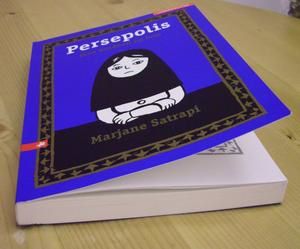 Persepolis
Persepolis
In her book „Persepolis" Marjane Satrapi looks back on her childhood in Iran during the 1970s and her flight to Europe from there.
In combining the visual language of comics with short texts Satrapi explains from the perspective of her personal experience and that of her parents how the Islamic Republic of Iran came into being and comments on Iran's situation.
She comments critically on her former home country by telling readers about how the country was re-islamized, how the Shah was forced to step down, how women were forced to wear veils, how people were tortured and how they fled the country.
By using the „simple" sign-language of comics the serious topic is „broken".
Exhibit-idea: Ursula Barbara Oberleiter, Raffaela Rudigier, 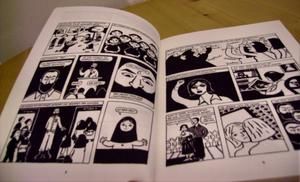 Denise Zech,
Denise Zech,
University of Innsbruck
How people in the East see themselves ...
This last part of our exhibition deals with the self-perception of those who Europeans are used to call „Orientals".
At some earlier point of our exhibition we have already illustrated that self-presentation which is „sent" to the other in a wider sense is a reflection of what has been received in terms of the other's perception of a person or a culture.
In order to be able to illustrate „oriental" self-perception in our exhibition we asked our Turkish and Lebanese team members and contributors to submit all sorts of material they can identify with; material showing their everyday life, their interests and illustrating their ideas. And we asked them to write little explanatory texts to go with this material.
In this part of our exhibition you also meet the Turkish originals of Orhan Pamuk's books.
Some of the covers of their German editions you have already seen as examples of orientalist stereotypes.
Do you remember?
In case you don't, just take a few steps towards the other side of the room and have another look ...
... and then just compare ...
And just take all this in and on your mind compare what you see as examples of an „oriental" self-perception in this last part of our exhibition with the stereotyping images you have seen before ...
 PROJECT BRIEF
PROJECT BRIEF
"Arabesques"
Notre Dame University
Instructors: Ms. Linda Selwood Choueiri (Main Campus)
Ms. Graziella Daghfal ( Main Campus & North Campus )
Ms. Marlyse Chamoun Hamati (Shouf Campus)
Subject 5, Arabesques
This project is based on traditional and modern Arabesques in Lebanon. Arabesques have an important role in the cultural aspects of the country and the way it has been applied throughout history until our time.
First of all, students are asked to analyse the design elements they will in-counter while doing their research; considering divisions, colours, positive and negative aspects that are to be manipulated in order to solve the problems of the project.
Then they are going apply what they have discovered in a creative and personal Arabesques design and execute manually a well-balanced project.
A certain style for mapping is introduced.
Therefore it is very important to make research and gather examples either through books, internet resources, field trips, ...etc.
The size of this project is 35 x 35 cm. hand-cut.
 Free choice of colours for the layers and a different colour for the mesh must be
studied before execution and approved on by the instructors.
Free choice of colours for the layers and a different colour for the mesh must be
studied before execution and approved on by the instructors.
Executions are to be carried in the studios under the supervision of the instructors.
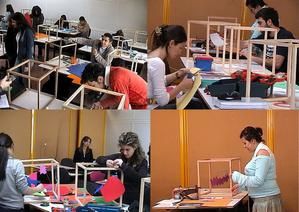 The „Cubes"-Project by Notre Dame University Beirut
The „Cubes"-Project by Notre Dame University Beirut
The „Cubes´"-project has turned the concept of our exhibiton project into a project of architectural studies.
As with the Arabesque-project this exhibit can only show part of the students' work.
PROJECT BRIEF
Notre Dame University Instructors: Ms. Linda Selwood Choueiri (Main Campus)
Ms. Graziella Daghfal ( Main Campus & North Campus )
Ms. Marlyse Chamoun Hamati (Shouf Campus)
"Breaking the Stereotype"
Veronika Bernard
Please read and try to come up with your own 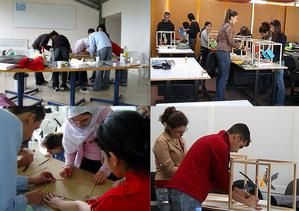 interpretation to be able to execute
this project which is divided into three parts; two of which are going to be based on personal observation and documentation and the final presentation is going to be the result of this
investigation, interpreted in an individual design based on specific elements extracted from your findings.
interpretation to be able to execute
this project which is divided into three parts; two of which are going to be based on personal observation and documentation and the final presentation is going to be the result of this
investigation, interpreted in an individual design based on specific elements extracted from your findings.
The three cubes (40 x 40) are being developed over a period of four weeks during which students will make a research, develop ideas and finally execute their ideas in a 3D format, using photos, thread and white cardboard.
Please read some of the notes taken from the main handout: 'Breaking the stereotype'':Oriental and Occidental Stereotypes in the Course of Time' and use them as a base tostart with:
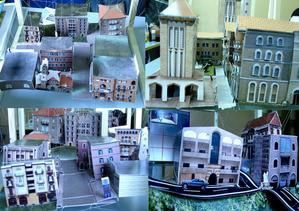 'The exhibition contrasts the representations of cultural perception concerning the
Orient and the Occident against the representations of Oriental and Occidental self-perception as they appear in literature, the media and every day life in order to break the stereotypes'.
'The exhibition contrasts the representations of cultural perception concerning the
Orient and the Occident against the representations of Oriental and Occidental self-perception as they appear in literature, the media and every day life in order to break the stereotypes'.
'As the exhibition aims at opening as many aspects of stereotyping to de-construction as possible to presents a well balanced mixture of research findings on the exhibition topic, audiovisual adaptations of research findings and artistic approaches to the exhibition topic'.
'Stereotypes are rather seen as generalizations and simplifications of what has been encountered individually. Stereotypes are products of intellectual modeling. They are not true or false. They
do not oppose what is defined as reality so ever. They rather reduce what is perceived as 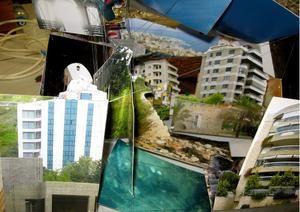 reality by its varieties and details in order to make individual perception processes more efficient. This is particularly true of cultural perception and cultural representation,
although cultural self-perception may also be open to stereotyping'.
reality by its varieties and details in order to make individual perception processes more efficient. This is particularly true of cultural perception and cultural representation,
although cultural self-perception may also be open to stereotyping'.
' Representation processes aiming at defining one's "Other" and one's "Self"..., how well people are able to identify with what they perceive in terms of cultural input, and how well they identify with their cultural "Self". Idyllizing, idealizing and romanticizing representations therefore find their way into cultural self-perception and self-representation whereas negative stereotyping (depreciatory, disparaging, demonizing, stigmatizing, criminalizing representations) keeps restricted to the cultural perception and representation of the "Other".
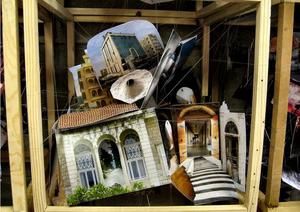 'Stereotyping is a factor in executing power over cultures different from your own'.
'Stereotyping is a factor in executing power over cultures different from your own'.
'Edward W. Said has pointed out that the concepts of the "Occident" and the "Orient" in their opposing qualities have been deliberately designed by occidental minds'.
'As both the Occidental and the Oriental concepts and the products of stereotyping are to be understood as intellectual working models both are subjects to changing cultural environments. Consequently, they have not been stable but have kept changing in the course of time'.
'As the exhibition aims at highlighting the varieties of self-perception and self-representation (regional/ethnic varieties, religious/denominational varieties, ideological/political varieties, migrants perspectives)...'
'The contributors are free to use photos which have been  shot by themselves, creative
combinations (collages) of photos...'
shot by themselves, creative
combinations (collages) of photos...'
IV. 'The perception-in-return of the European perception of the Eastern Mediterranean by the people living in the area (present and past)'
'Exhibition Concept in short
Aspects of relevance are listed and can be constantly added to;
+ people's character/mentality (calm, dignified, phlegmatic, religious etc.)
+ scarf / veil covering your body in public / showing one's body in public / public nakedness
+ women and men (social status, patterns of relation)
+ mosques / minarets/churches
+ means of transport (camels, caravans,...)
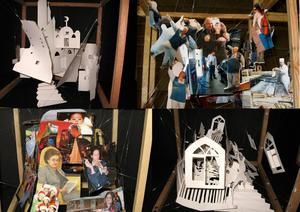 + sceneries (desert, bazaars, colours...)
+ sceneries (desert, bazaars, colours...)
+ religious belonging (Muslim, Christian)
+ representative places / cities
Some note to consider while preparing for the execution of your project aiming at catching 3D images into 2D pictures(frames) then translating and transforming your findings into an illusion of planes interacting with each other in 3D space(within the 40X40 cubes)
- 3D cubes (40x40) to be executed; two of which you are designing with photos, one with white cardboards and transparent fish wires for hanging the items.
- photos are taken from different angles, with zoom in/out on specific items that you consider important
- pick up and cut/crop from your pictures only what you need in order to construct the volume you need
- the size also should be worked according to zoom in/out in order to design the different planes you are working with
- deconstruct your pictures into planes designed to give the impression of volume and 3D forms
- in your construction, your planes shouldn't be touching rather you have to investigate the different possibilities using different angles to give the illusion of a 3D volume
- the third cube is made of patterns of white cardboards using different sizes (taken from 2 or 3 architectural elements) of architectural details you discovered while shooting your pictures and choose (1 to 2 silhouettes) characters with interesting gestures or movements to duplicate using different scales and integrate them within your architectural structure within the third cube.
- All cubes are kept in the Storage Room, FAAD, at Notre Dame University and worked on only in the Design Studios on campus.
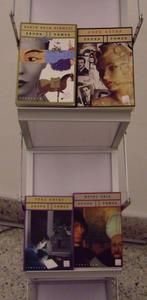 The covers of Orhan Pamuk's novels
The covers of Orhan Pamuk's novels
have covers which illustrate significant details of the stories told.
The covers of some of their German editions, however, make use of oriental motives which do not necessarily have any link to the stories told in the books.
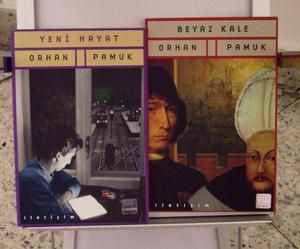
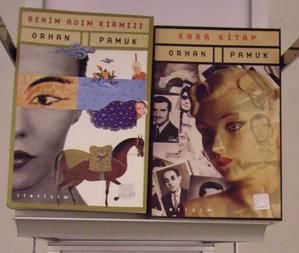
 Anatolian Scenes
Anatolian Scenes
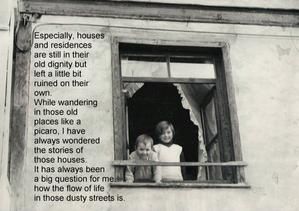

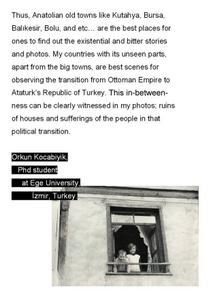

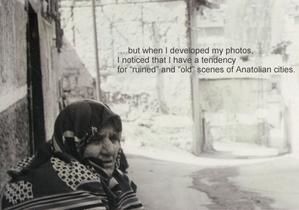
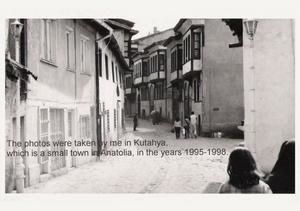
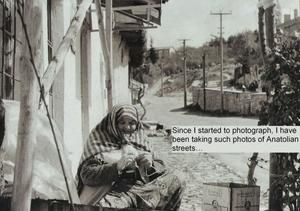
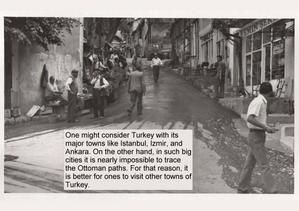
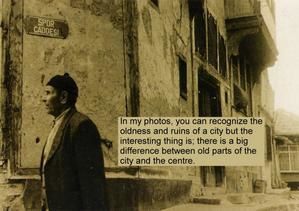
 A Photo Journey (1)
A Photo Journey (1)
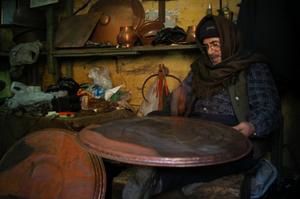


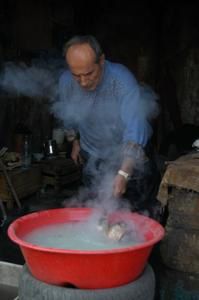
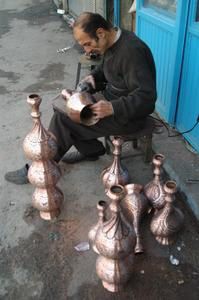
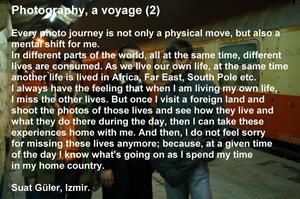 A Photo Journey (2)
A Photo Journey (2)